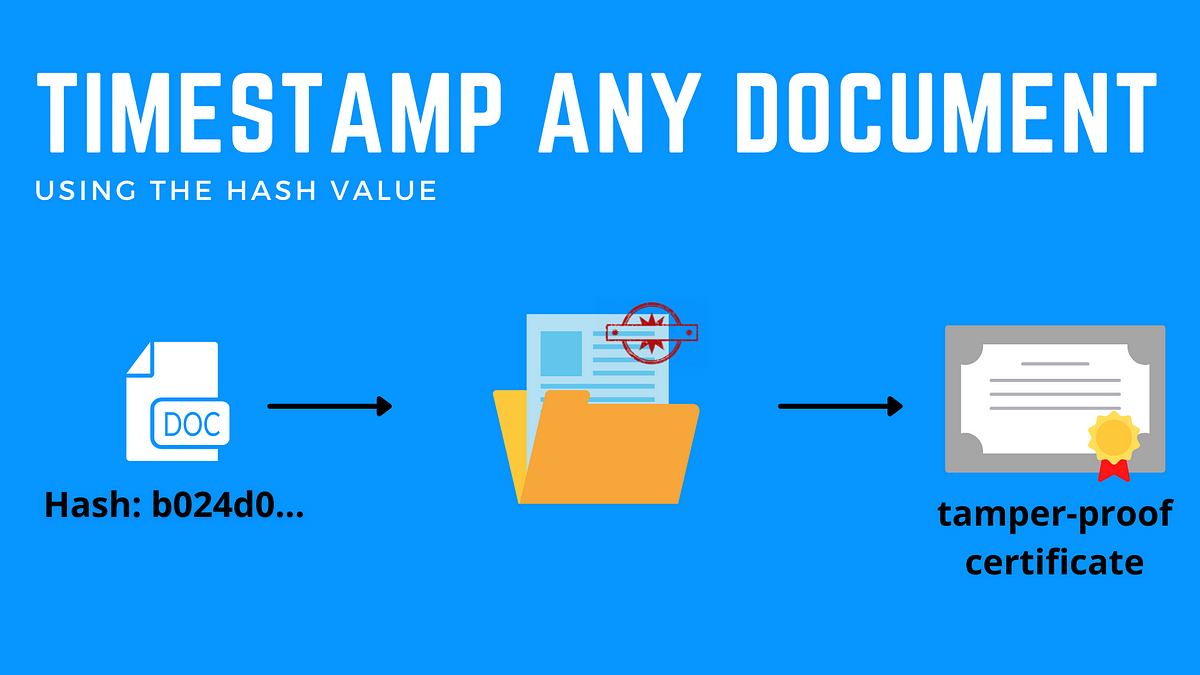In an age where digital documents are the norm, ensuring the integrity and authenticity of these records is paramount. From educational certificates and medical records to business contracts and property deeds, the need to verify the legitimacy of digital documents has never been more crucial. Fortunately, blockchain technology offers a groundbreaking solution to this challenge. In this blog post, we’ll explore how blockchain is revolutionizing document verification, providing tamper-proof records that can be trusted without a shadow of doubt.
In today’s fast-paced world, the transfer and sharing of digital documents have become an integral part of our daily lives. We rely on digital records for various purposes, including identity verification, financial transactions, legal agreements, and more. However, the ease with which digital documents can be manipulated or forged has given rise to a pressing issue: how can we be certain that the information contained within these records is accurate, unaltered, and authentic?
This is where blockchain technology enters the stage, offering a revolutionary solution to the age-old problem of document verification. Blockchain, the underlying technology behind cryptocurrencies like Bitcoin, has gained widespread attention for its ability to create tamper-proof records and foster trust in the digital realm.
Understanding Blockchain Technology
Before delving into how blockchain enhances document verification, let’s briefly grasp the fundamentals of this transformative technology.
Blockchain is a decentralized and distributed ledger that records transactions across a network of computers. Unlike traditional centralized systems where a single entity holds control, blockchain operates on a consensus mechanism, ensuring transparency, security, and immutability. Each set of transactions forms a “block,” which is linked to the previous one, creating a continuous chain of blocks – hence the name “blockchain.”
The key characteristics of blockchain technology include:
Decentralization: No single authority or central entity has control over the entire network, making it resistant to censorship and tampering.
Transparency: Transactions are recorded publicly, allowing anyone to view and verify the data, thus promoting trust.
Immutability: Once data is recorded on the blockchain, it becomes extremely difficult, if not impossible, to alter or delete. This immutability ensures the integrity of the stored information.
Security: The use of cryptographic techniques enhances the security of data on the blockchain, making it highly resistant to hacking or unauthorized access.
Blockchain in Document Verification
Now, let’s explore how blockchain technology is transforming the landscape of document verification and authentication.
1. Digital Identity Verification
One of the most significant applications of blockchain in document verification is the establishment of a secure and verifiable digital identity. Traditional methods of identity verification often involve cumbersome processes, such as presenting physical documents, verifying identities in person, or relying on centralized databases. These methods can be time-consuming, expensive, and susceptible to fraud.
Blockchain offers a more efficient and secure approach to digital identity verification. By creating a blockchain-based digital identity, individuals can store their personal information, such as passports, driver’s licenses, and birth certificates, in a tamper-proof and decentralized manner. This enables users to control access to their identity data and share it securely with trusted parties when needed.
2. Academic and Professional Credentials
Academic and professional credentials, such as diplomas, degrees, certifications, and licenses, are essential documents that often require verification. However, the proliferation of counterfeit certificates and the complexity of verifying credentials from different institutions have posed significant challenges.
Blockchain technology allows educational institutions and credential-issuing authorities to record and verify academic and professional achievements on a blockchain. When an individual completes a course or obtains a degree, the corresponding credential is added to the blockchain. This creates a transparent and unalterable record of the individual’s educational and professional history, which can be easily verified by employers, educational institutions, and other relevant parties.
3. Supply Chain and Document Authentication
In industries where the authenticity of documents and product provenance are critical, blockchain provides an effective solution. For example, in the food industry, consumers are increasingly concerned about the origin and quality of the products they consume. By using blockchain, companies can record the entire supply chain history of a product, from its source to its final destination. Any document related to the product, such as quality certificates or shipping records, can be securely stored on the blockchain. This transparency allows consumers to verify the authenticity and quality of the products they purchase.
4. Legal Contracts and Agreements
Blockchain has the potential to revolutionize the way legal contracts and agreements are created, executed, and verified. Smart contracts, which are self-executing contracts with the terms of the agreement directly written into code, can be deployed on blockchain platforms. These smart contracts automatically enforce the terms of the agreement when predefined conditions are met.
The immutability of blockchain ensures that once a smart contract is executed, it cannot be altered or disputed. This reduces the need for intermediaries, such as lawyers or notaries, to verify and enforce contracts, making the process more efficient and cost-effective.
The Future of Document Verification
As blockchain technology continues to evolve, its applications in document verification are poised to expand even further. Innovations in decentralized identity, interoperability between different blockchain networks, and enhanced privacy features will contribute to a more secure and user-friendly document verification ecosystem.
In conclusion, blockchain technology has ushered in a new era of document verification, offering tamper-proof records that can be trusted with utmost confidence. Whether it’s verifying identities, academic credentials, supply chain documents, or legal contracts, blockchain’s decentralized and immutable nature provides a robust solution to the challenges of document authentication in the digital age. As blockchain adoption continues to grow, we can look forward to a future where the authenticity of digital documents is no longer a question but an indisputable fact.
In a world inundated with digital records, blockchain emerges as the guardian of trust, ensuring that our documents remain tamper-proof and our identities secure.



